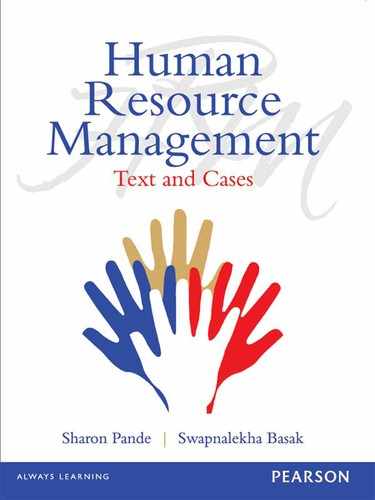Preface
Fortunately or unfortunately, we come from a corporate background. During our working years as practising HR managers across industries and geographies, we often felt the need for a more practical, pertinent and relevant training in human resource management (HRM) in our business schools. Once we shifted sides from corporate jobs to teaching, we found that while schools have become much conscientious about bringing in industry experience into the pedagogy by way of industry professionals coming and teaching and extensive use of case studies, textbooks did fall short of the ability to give students a peek into the real world of human resources management. After having spent some time teaching and understanding the students’ side of things, we made an attempt to close this gap with this book.
This book endeavours to bring forth concepts of Human Resource Management with lucidity, heavily relying on examples and illustrations from the industry to explain these concepts in the background of the scene at the Indian workplace. It consists of 16 chapters, 4 special topics as appendices and a list of commonly used jargon explained in easy English. The chapters have been arranged in a manner which traces an employee's journey step by step inside an organization.
The rationale of introducing the special topics is to set aside and cover in a detailed manner some very relevant and current features of HRM in the industry which percolate every aspect of work life of a business manager. The omnipresence of information technology (IT) is one such aspect. Today IT percolates every aspect of the HR world. Manpower planning has morphed into workforce planning, and retention is being planned on the basis of complex analysis of attrition. It is therefore important for an HRM student to not only understand the role that IT plays in each and every activity but also build a view on how an HR manager can leverage IT in the future too. For this reason it becomes important that they know about IT not only along the employee's journey but also along the IT value chain relevant to HRM, i.e., use of IT from data and workflow management to predictive workforce analytics.
Similarly, competency frameworks form the basis of many an organization's recruitment, development and performance management processes. It therefore seemed imperative to cover this framework separately for the student to appreciate its usage in all aspects of human resources. The jargon at the end of the book attempts to give a taste of the language that the student manager would come across at the workplace.
In order to make the book relevant, interesting and scholarly yet practical, a number of pedagogical features have been adopted. Each chapter contains most of the following elements:
- Comic Strip ‘Plain Jane’: Placed at the very beginning of the chapter, the purpose of the comic strip is to break the monotony of the text and begin the chapter with a practical insight which becomes clearer as one reads on. The plot of the strip revolves around Plain Jane, a fictitious character who is a management trainee in the Corporate Human Resources function. She has been a meritorious student and is now committed to making a rewarding career in HR. She is very observant and therefore her experience in the company Knowhere Inc. is very rewarding as every incident teaches her a valuable lesson in Human Resource Management.
- Chapter Objectives: Immediately following the comic strip is a brief list of learning objectives.
- Opening Case: This case brings out an HRM concern relevant to the learning of concepts given in the chapter. It seeks to present the reader with a management problem which can be solved by learning the concepts which follow it.
- Food 4 Thought: These are quotes, anecdotes, facts meant to set the reader thinking.
- HRM in Action: These are practical applications and illustrations from the industry to give a practical feel of a concept in action. These have been drawn from hundreds of interviews, articles, reports and surveys mostly in India.
- Views in the News: These throw light on what is being discussed on a certain topic in the contemporary business world. These could be in the form of an article or a news item or an interview with an authority on the subject from the industry.
- Field Guide: These present simple, easy-to-understand-and-use, sample templates of documents used at the workplace; e.g., a job description format or a performance appraisal form.
- In a Nutshell: This is a chapter summary, a handy concise reference to the chapter's main points.
- Application Cases: These bring forth examples of relevant (to the chapter) HRM issues, concerns and an organization's approach to dealing with them.
- Review Questions: These help readers to check if they have covered and comprehended the broad concepts in the chapter.
- Discussion Questions: These enable the student to explore the application of concepts and build an informed opinion on the practicality and usage of management concepts at the workplace.
- Drill Down: Each chapter in this book goes on to form a subject for those specializing in Human Resources. The scope of the book does not make it possible to drill down into each section beyond a limit. But to keep the interest going for someone who has liked what they have read in a certain chapter, a list of resources to research the topic further is included in this section called ‘Drill Down’.
- References: These are lists of resources in terms of publications and Web sites.
SHARON PANDE
SWAPNALEKHA BASAK
